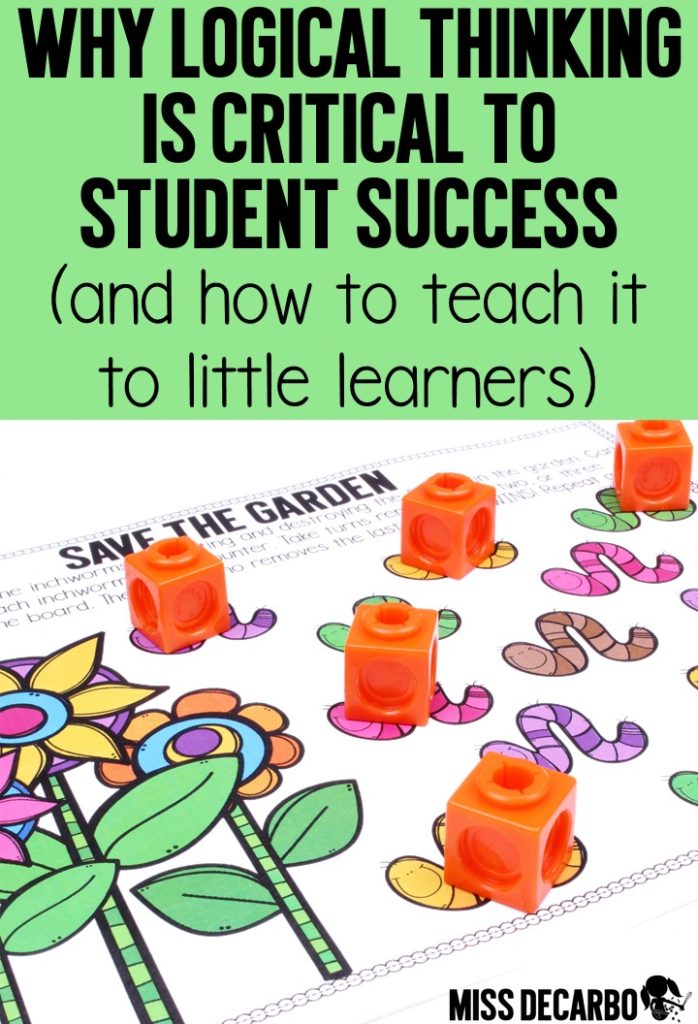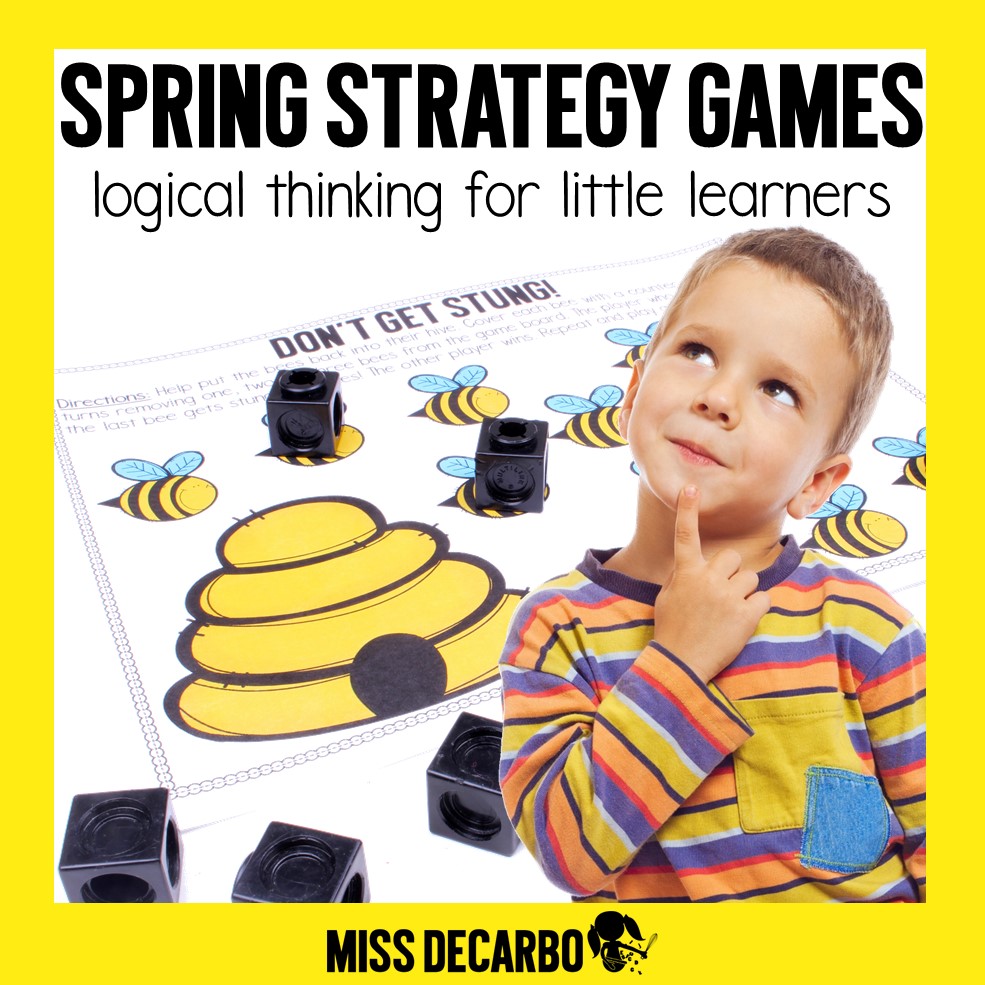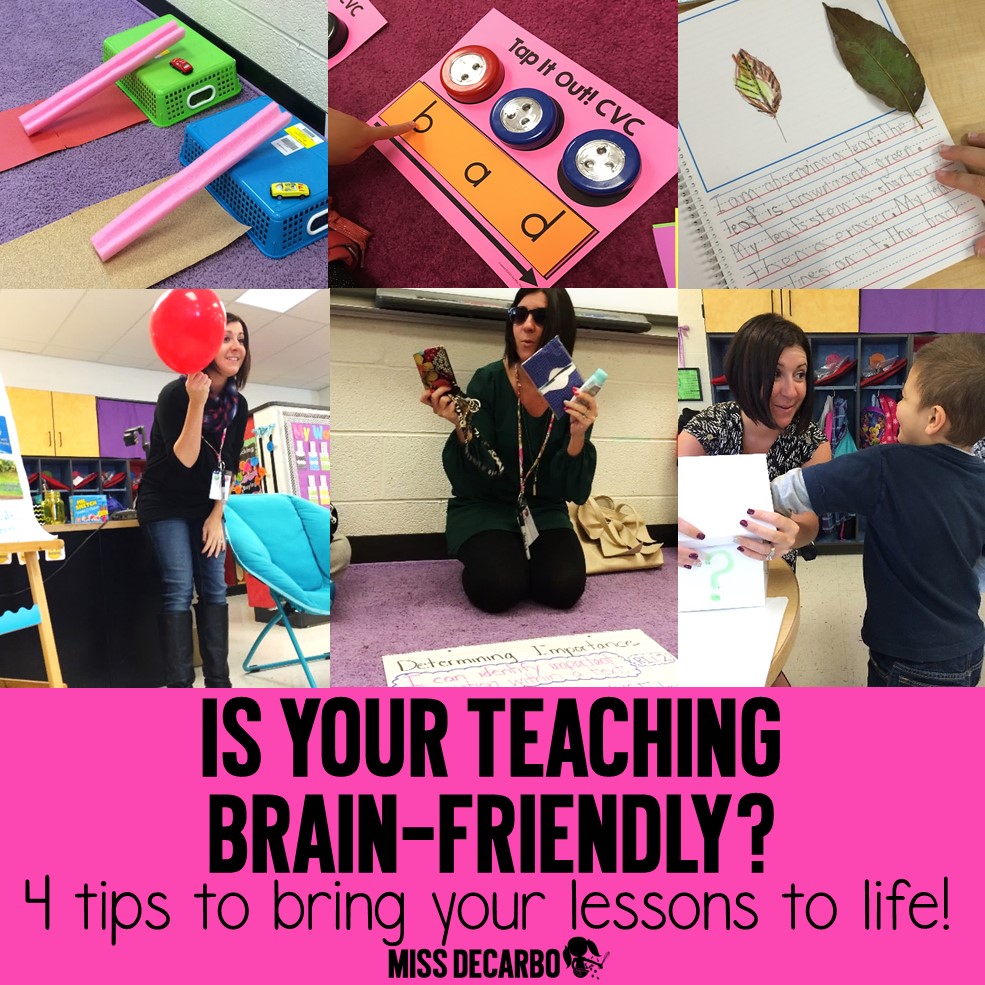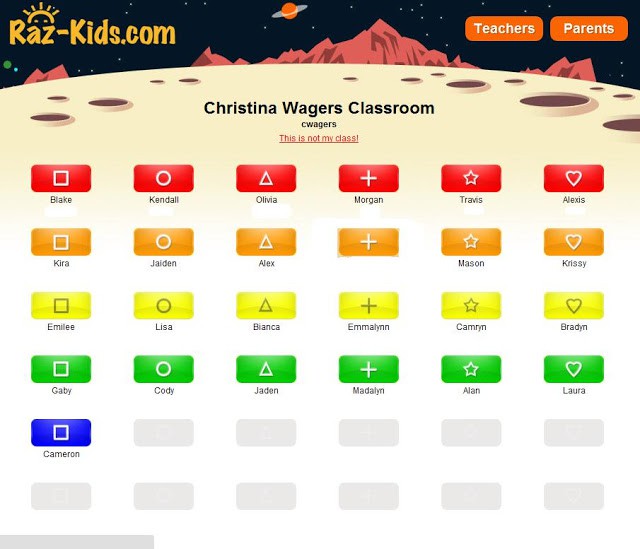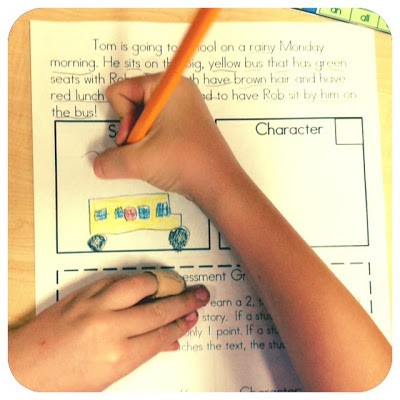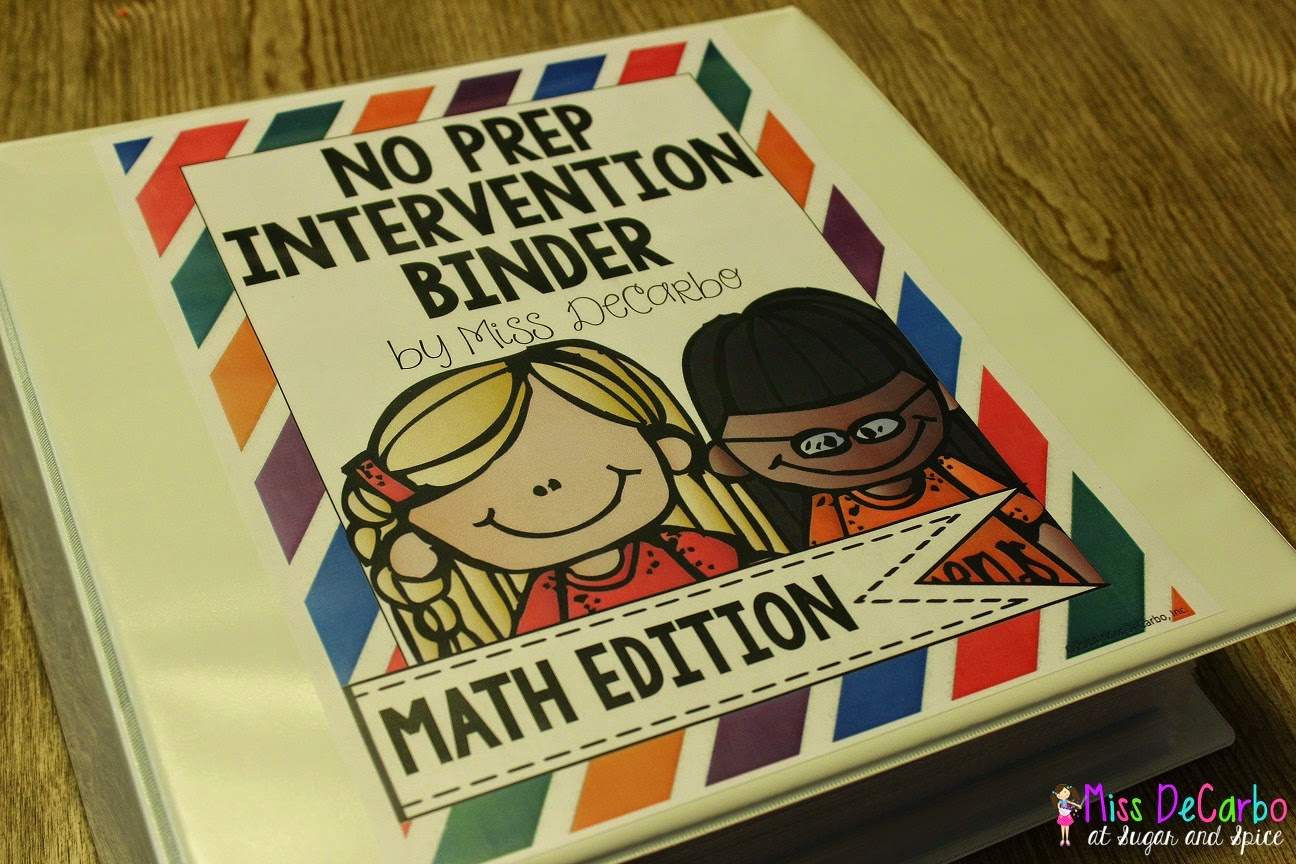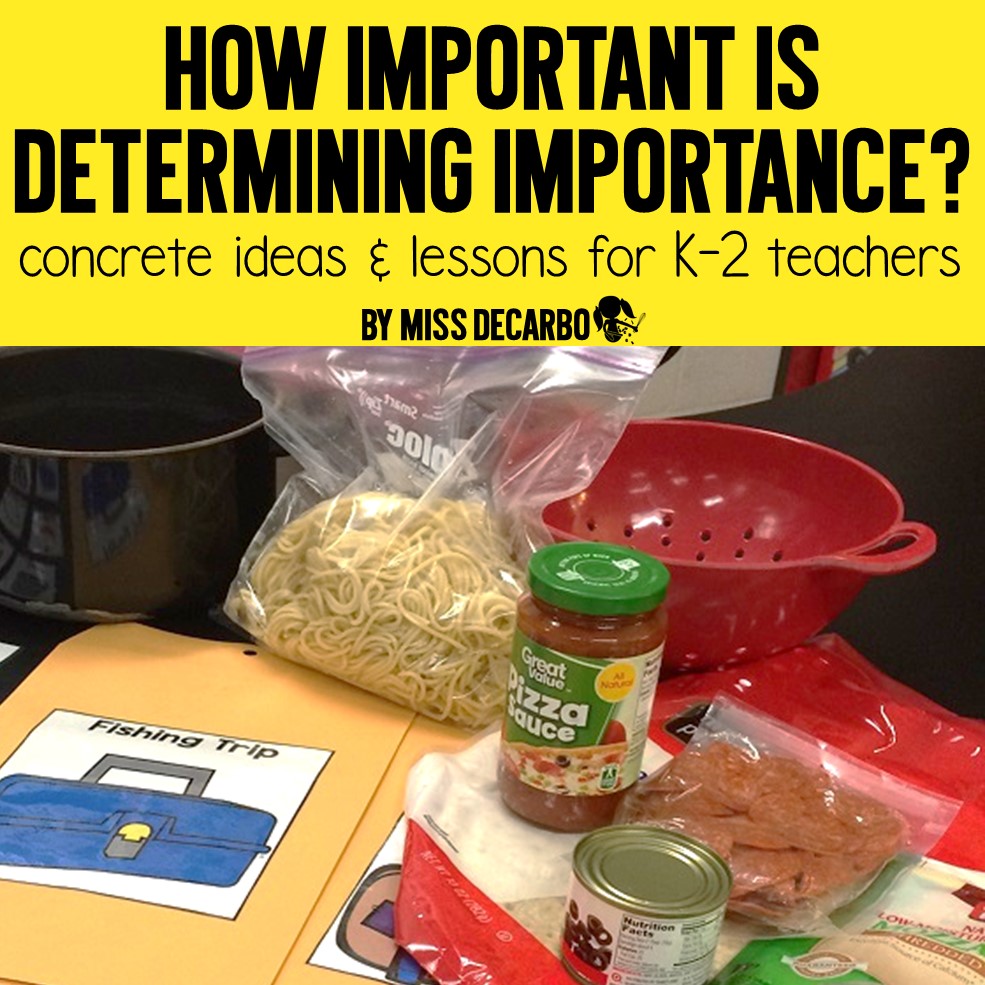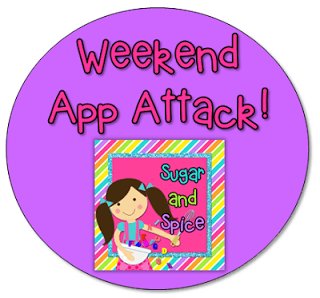Why Logical Thinking Is Critical to Student Success
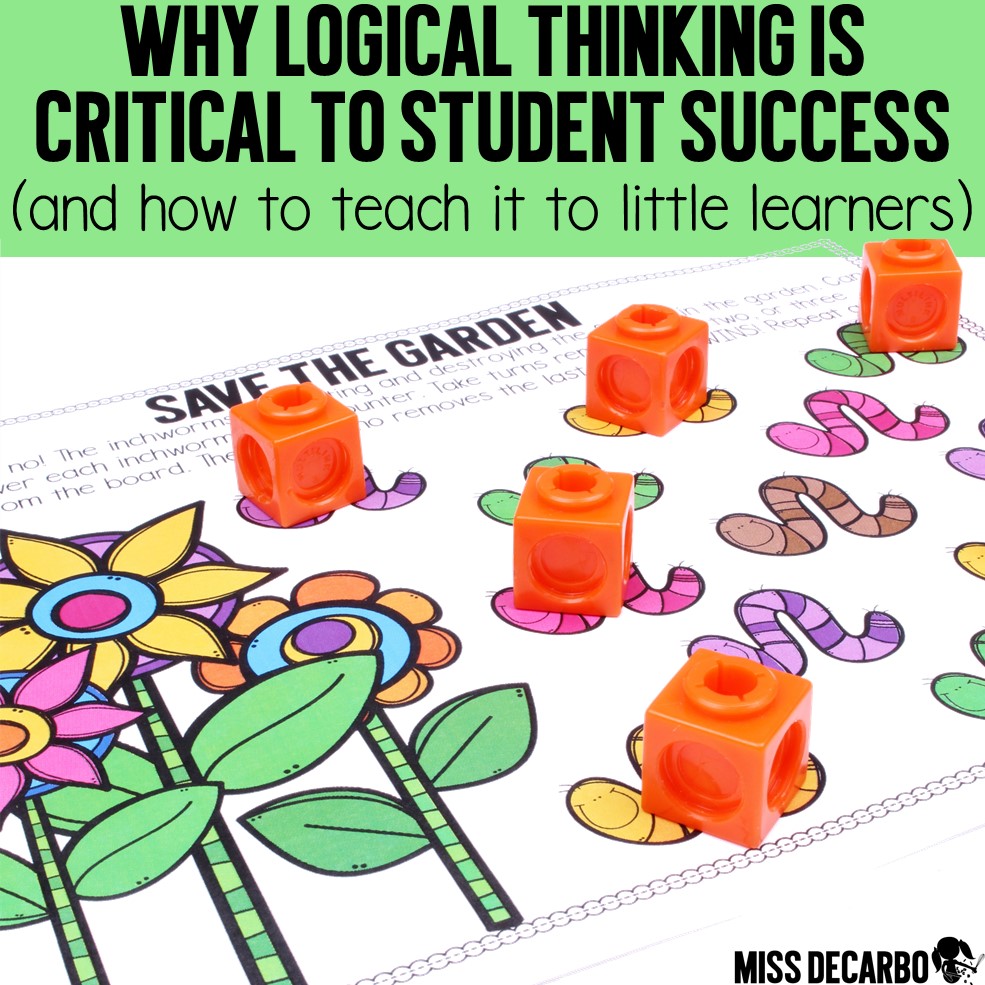
We spend a lot of time planning beautiful, standards-based lessons for our students. We cross our t’s and dot our i’s when it comes to a rich introduction, instructional strategies that gradually release independence to the children, and appropriately designed assessments to check for student understanding. But what about those important, foundational, brain-based skills that are not packaged in a pretty bow with a detailed lesson plan to follow? How are we intentionally and explicitly teaching logical thinking, problem-solving, and reasoning skills? Do we take enough time for those skills in the classroom? Children are not born with the ability to think critically. Critical thinking is composed of a variety of skills that enable us evaluate information, think critically about a problem, and find alternative ways to approach and analyze possible solutions. As educators, we must foster these important skills at school. Although our students are thinking every day within our classrooms, they often do not recognize they are doing it. I believe it is time to be intentional in our instruction and directly teach our students to be aware of when, how, and why they are practicing critical thinking skills within our classrooms.
If young children understand the importance of being able to think critically, we can empower them and arm them with the greatest tool they will ever carry with them into adulthood – the ability to think carefully, creatively, and logically.
Why Is Logical Thinking Important?
In this post, we’ll focus on logical thinking skills and how vital they are to our students’ success both in and out of the classroom. Logical thinking is an essential problem-solving skill that we want students to develop for mathematical reasoning and real-life experiences. Logical thinking is best described as being sequential. To think logically about something means to think about it in steps. Math is a highly sequential process. Learning to think logically occurs in the early years of education. For example, when we introduce patterns to our students, we are setting the foundation for logical thinking. Young children need to analyze the current situation, understand the sequence, and ask themselves, “What comes next?” By implementing logical thinking activities into our classrooms, we are setting our students up for success in their adulthood, too. We want to raise children to be rational, logical problem solvers who can see the world from many different angles. As teachers, we have the opportunity of being able to help lay the foundation for these life-long skills.
How Do I Intentionally Teach Logical Thinking In My Classroom?
Like any skill in school, if we want our students to be good at it, they need to practice it and think it is FUN! We want students to understand the power of thinking and truly want to get better at it. In the same way that we need to practice our math facts over and over again to be great at them, we need to practice thinking. I can’t think of a better way to do that than through GAMES in the classroom! There are tons and tons of amazing logical and critical thinking games available for kids. Over the next couple of months, I will be sharing several additional blog posts that are devoted to critical thinking within the classroom. Today, we’re going to focus on several strategy games that are perfect for our little learners.
Strategy Games for Little Learners
I recently shared a new resource in my shop called Spring Strategy Games: Logical Thinking for Little Learners. Besides the game boards for the strategy games, the only thing you will need to add to your new critical thinking learning center are counters. You can use any counters you would like. Below, I’ve shared some favorites, such as teddy bears, cubes, craft pom poms, and red/yellow counters:
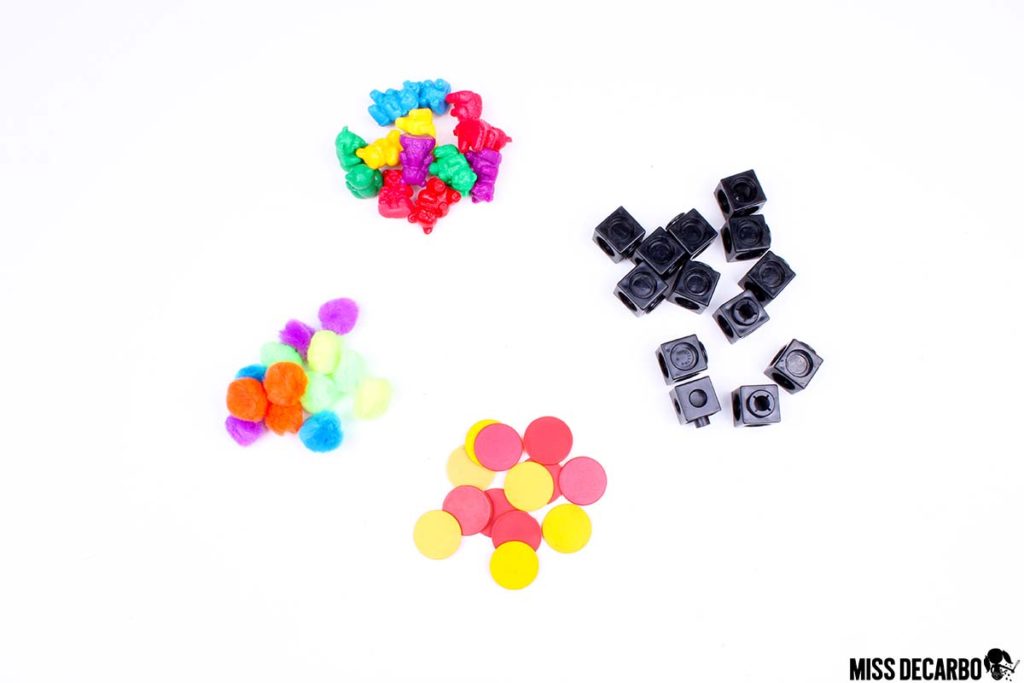
The pack comes with 10 games. For eight out of 10 of the games, you will only need 13 counters to play. Below is a picture of all of the materials you need for these first eight strategy games:
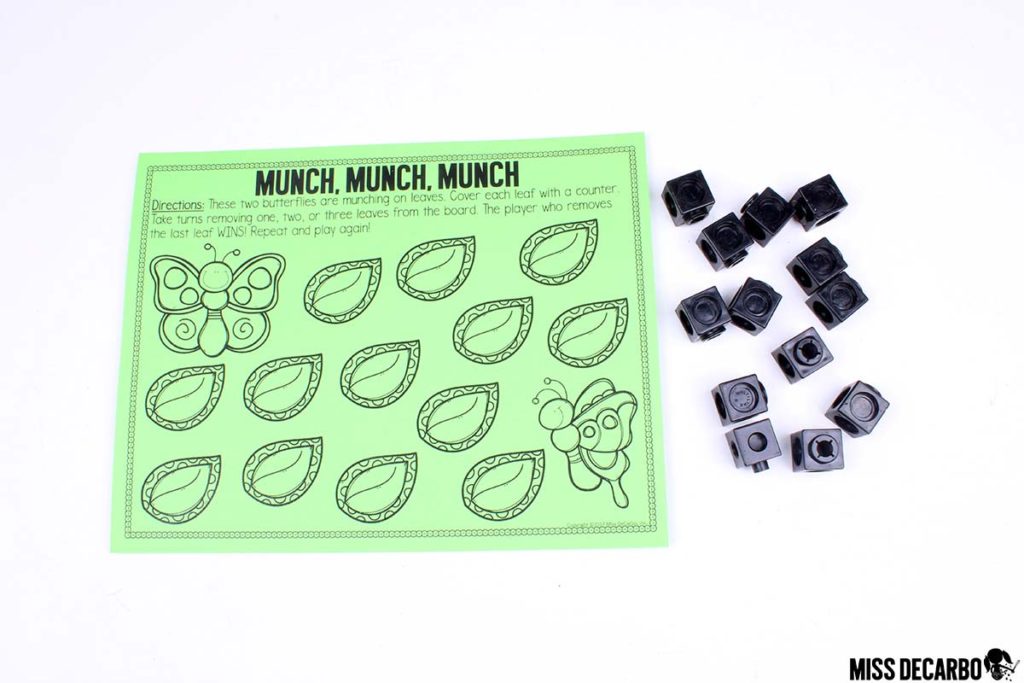
How To Play
There are three versions of the strategy games included in the pack. For the first four games, students will place a counter on each of the pictures on the game board. Every game board has a different “scenario” or problem that the children are trying to solve. The students will take turns removing one, two, or three counters from the game board. The player who removes the last counter loses. The other player wins. Then, students can repeat and play the game again.
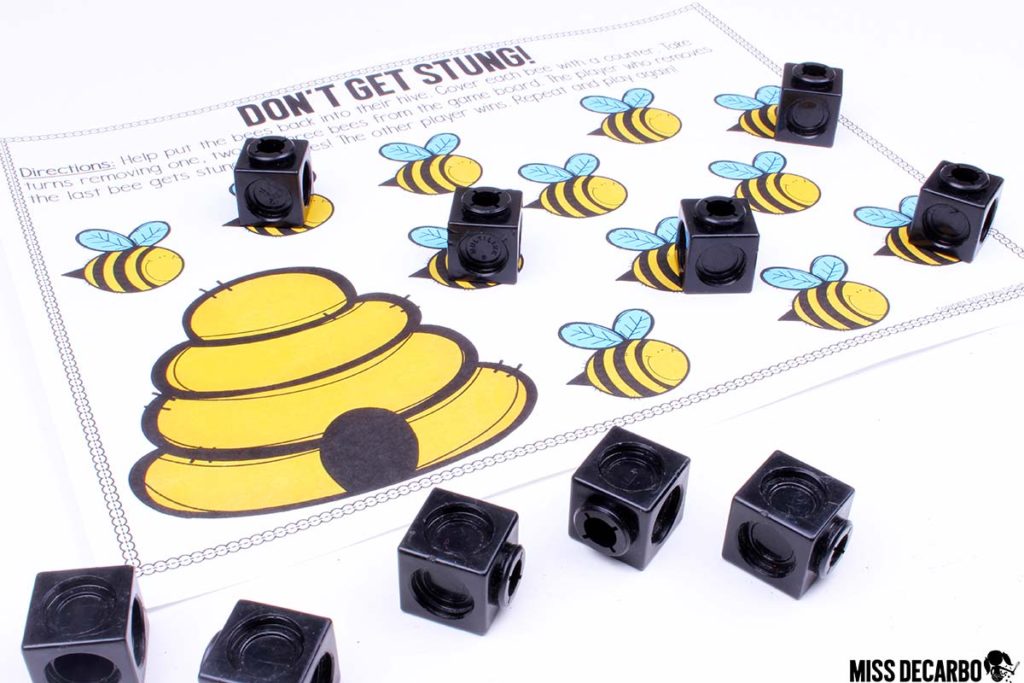
Why This Strategy Game Works
In all ten of the games, the students have to analyze and think through their partner’s potential next move in order to make a decision. These very simple games help young children think through “if this…then that” scenarios. As a result, the children work on problem-solving skills, cooperation skills, critical thinking skills, logical thinking skills, and mathematical reasoning.
In games four through eight, the rules shift ever so slightly. This time, the partner who removes the last counter from the game board WINS! Don’t let this very subtle change fool you. By switching the rule at the end of the game, the children have to change the problem-solving strategies they learned during the first four games. This creates a different challenge and provides a different way to practice thinking skills!
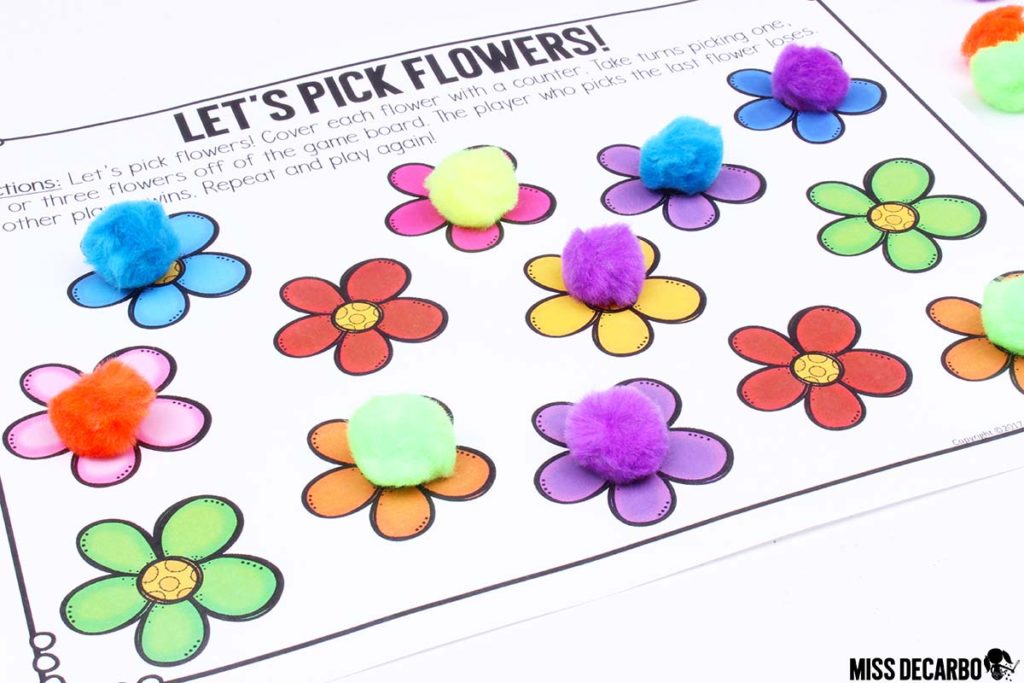
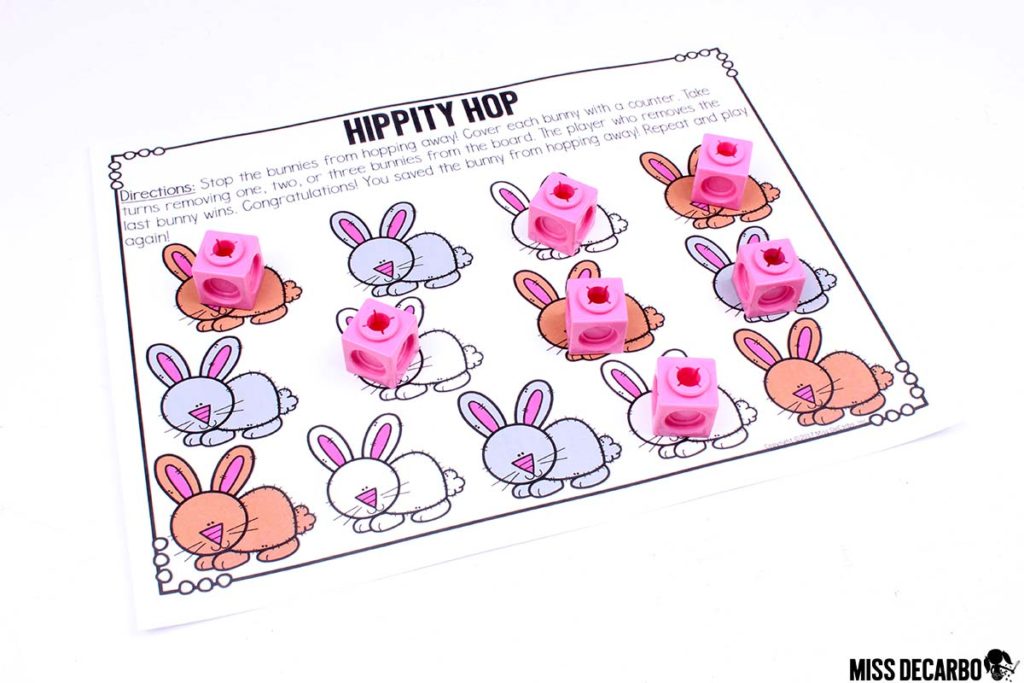
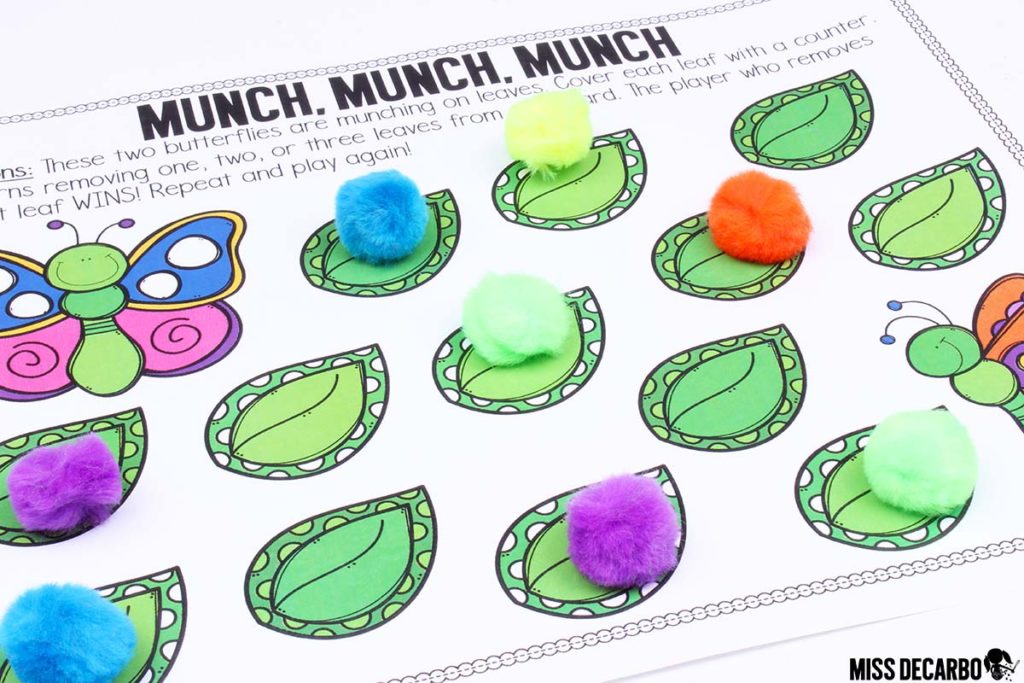
The last two games differ from the first eight. These games are longer and have a twist on the rules. In the photograph below, the children are both trying to jump to the pond. Instead of placing a counter on every picture, the children will each use a playing piece. They can use cubes, teddy bears, red and yellow counters, or game ponds from other board games. The children will take turns “jumping” their playing pieces one, two, three, or four spaces on the board. The player who jumps and lands on the last lily pad wins. Then, the students will repeat and play again. As you can see, the game only changes slightly, but it creates a new challenge both visually and logically. The children have to take into account what will happen if the other player not only moves one, two, or three spaces, but this time around – four! It increases the challenge and adds a little twist and fun to the games!
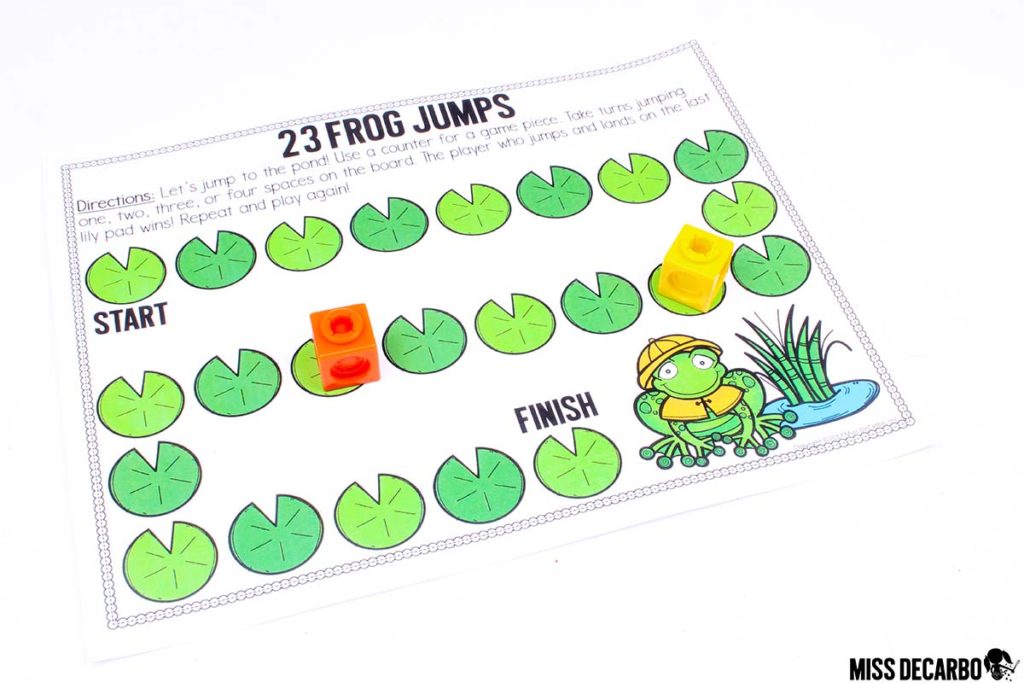
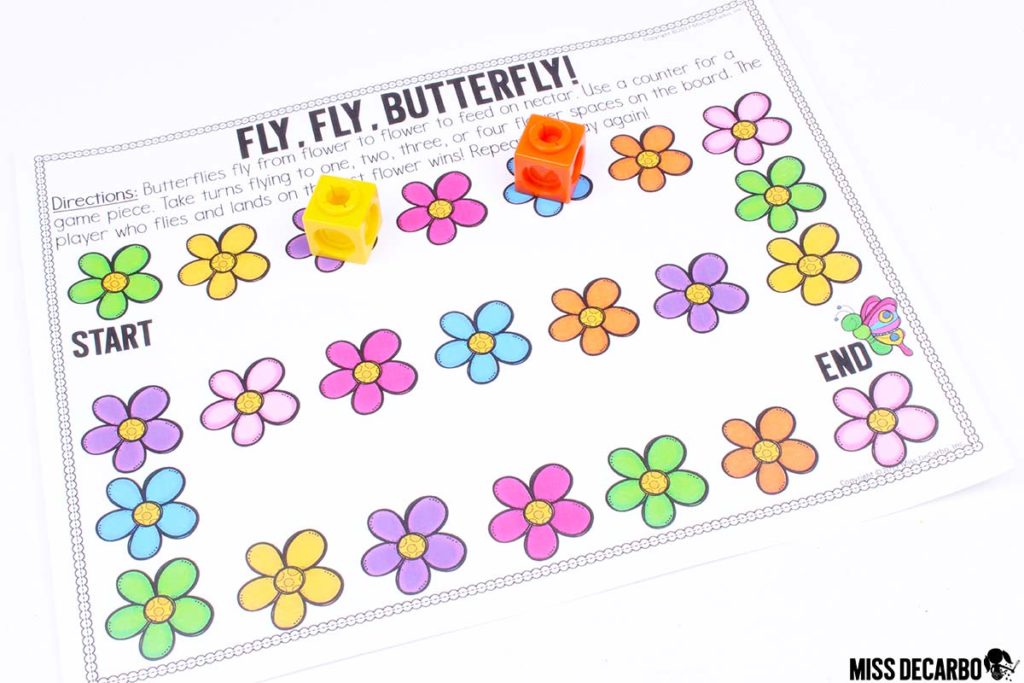
All of the games within the pack come in a color version and an ink-friendly version. Pictured below are the games printed on colorful cardstock using the ink-friendly versions.
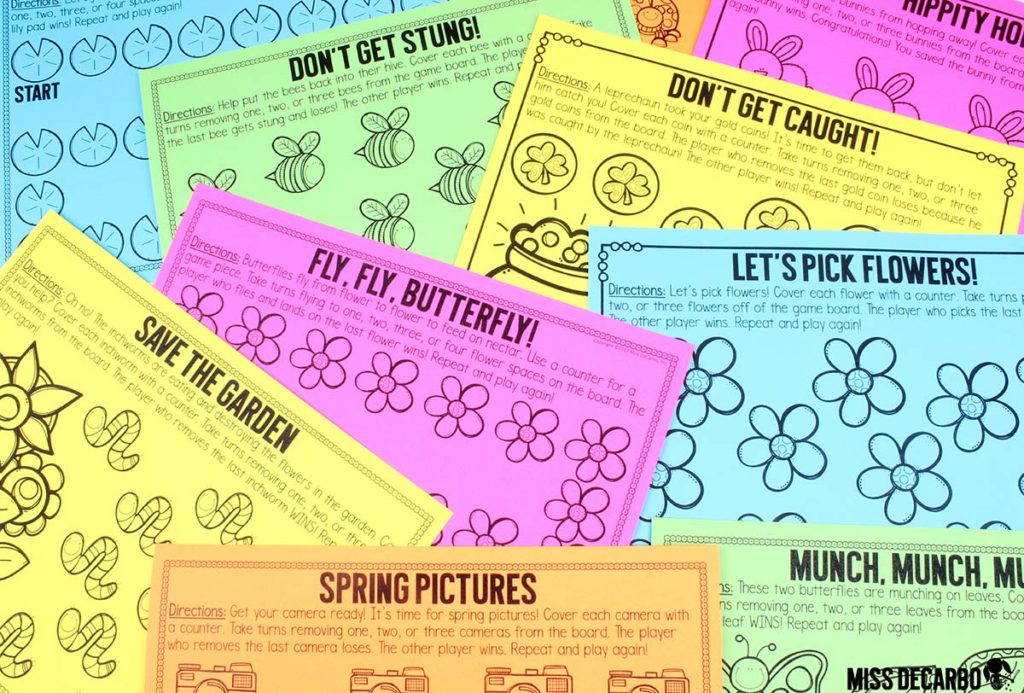
I Love It and Want To Try It In My Classroom!
You can try out a FREE game board by clicking on the preview download for this new resource. In the preview download, you can access a color and black and white version of one of the spring games. Stay tuned because I will be releasing several additional seasonal strategy game packs to my store in the future. These games are perfect for morning tubs, fast-finishers, partner games, literacy and math centers, small group warm-ups, after-school programs, or even as “Fun Friday” centers and games!
You can get the entire pack of ten strategy games by clicking HERE or on the cover picture below:
More Logical Thinking Games for the Classroom
Computer games are also great ways to intentionally add logical thinking centers and activities into your classroom. They would make an ideal addition to your math centers or learning centers. Below are two websites that contain great logical thinking games for kids:
Thank you so much for taking the time to chat about the importance of logical thinking in our primary classrooms. If we begin to lay the foundation for critical thinking at the earliest age, we will set our students up for success both now and in the future. In addition, by continuing to make thinking FUN and engaging, our students will recognize its’ importance and feel empowered in their learning abilities!
If you enjoyed this post and want to save it to refer to again one day, feel free to use the image below to pin it to your Pinterest boards. You may also wish to pin the image to share with your co-teachers and friends. Thank you again for stopping by! -Christina
